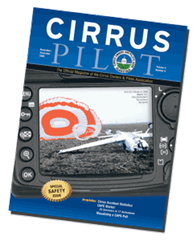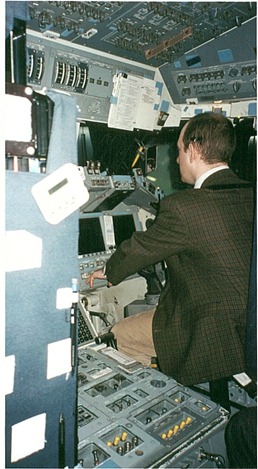Seriously, with a title like that I don’t need to add any hype to get you to read this post. It can hardly get any better than flying a brand new plane with the latest avionics in one of the most beautiful parts of the world. Well, actually, it does if you fly with a great instructor like Max Trescott. He literally wrote the book on the G1000 / Perspective and he’s great fun to fly with.
I flew for two afternoons with him. We met at the Sky Kitchen at San Carlos airport. It’s a classic American diner with an airport out of the window. The airport ICAO code is KSQL, presumably named for the Oracle database company which has its headquarters nearby.
On the first day, during lunch Max and I had a great chat about aviation and blogging. We were so absorbed in the conversation that the waitress threw us out because we were hogging the table but we hadn’t noticed that we’d finished eating. (If I had noticed, I assure you I would have carried on eating. An empty plate is a challenge for me.)
After lunch, though, the work began. We went to the West Valley Flying Club where Max briefed me on the basics of the Perspective cockpit. Then we went out to the aircraft – a beautiful, almost-new Cirrus SR-22 Turbo with Perspective avionics and all the toys. It was in its own hangar and so it was spotless and shiny; unlike the planes I fly here which live outside. There’s a little electric tow truck so you don’t have to break a sweat getting it in and out. To get fuel, you just radio the fuel company and in minutes a nice chap comes and fills the tanks. I think the US is aviation heaven.
We flew east towards Stockton where we did some auto-coupled and hand-flown approaches using the GPS and ILS. The weather was perfect – good visibility above cloud but a nice thick cloud layer from about 2,000 feet down to about 300 feet. Perfect for actual IMC practice.
Since I hadn’t flown for six weeks and there was a lot of new stuff to deal with, I felt very rusty. But Max was very patient and the whole thing felt relaxed and unstressful. Certainly, the Perspective makes it very easy to fly providing you get it set up properly. The highway in the sky indicators make it very simple to fly an approach and the autopilot will fly holds and other complex stuff that the Avidyne system I normally use won’t do. I also like the ability to climb at a given airspeed on the autopilot; this is going to help people avoid autopilot-induced stalls and improve engine cooling on hot days.
Other cool features include: satellite weather, XM radio for long trips, Jeppesen charts and the range circle which adjusts in real time as you lean the engine. With the keypad on the centre console, it looks, feels and works pretty much like an airliner FMS.
I had two concerns, which may resolve themselves with more familiarity. The first is that there is a lot to learn. I had a few “why is it doing that” moments. It’s all very logical but you need to understand how it thinks. For example, you can set the autopilot to fly an approach and it will descend with the procedure or glideslope automatically. Except if you have a higher altitude commanded on the altitude bug. The logic is that it doesn’t want to descend lower than the higher of the two settings. But if you don’t know that you can find yourself levelled off when you were expecting to keep going down.
The second concern is a more minor one, but I like the way I can switch the Avidyne MFD between north up and track up. With north up, I can make position reports and estimate distances easily – this is important with airspace restrictions and intensive ATC around London – and then I can switch to track up for terrain, TCAS etc. While the Perspective will switch, it requires major hackage in the system settings and so we flew with track up all the time.
The second day felt more comfortable. I was beginning to get the feeling for the basic features of the system so that I could concentrate on the details, the approaches and my checks. This time we headed southwest towards Salinas and Monterey. We did a bunch of different WAAS and GPS approaches, some with the full procedure using the autopilot. I love the way it can just fly itself into the hold and then sit there all day until you tell it where to go next.
The view out over the Pacific was fantastic and it was a real treat to be flying into Monterey. Max says that you can see whales sometimes.
Heading back towards the Bay Area, the low cloud looked great over the peninsula.
As a special treat, we also flew an approach into Moffett Field for a close look at the airship hangars.
I won’t say that the best bit of the trip was putting the plane back in the hangar. It wasn’t. I was sad to be done with my flying on this trip. But getting to drive the electric tow tractor was a big compensation.
















